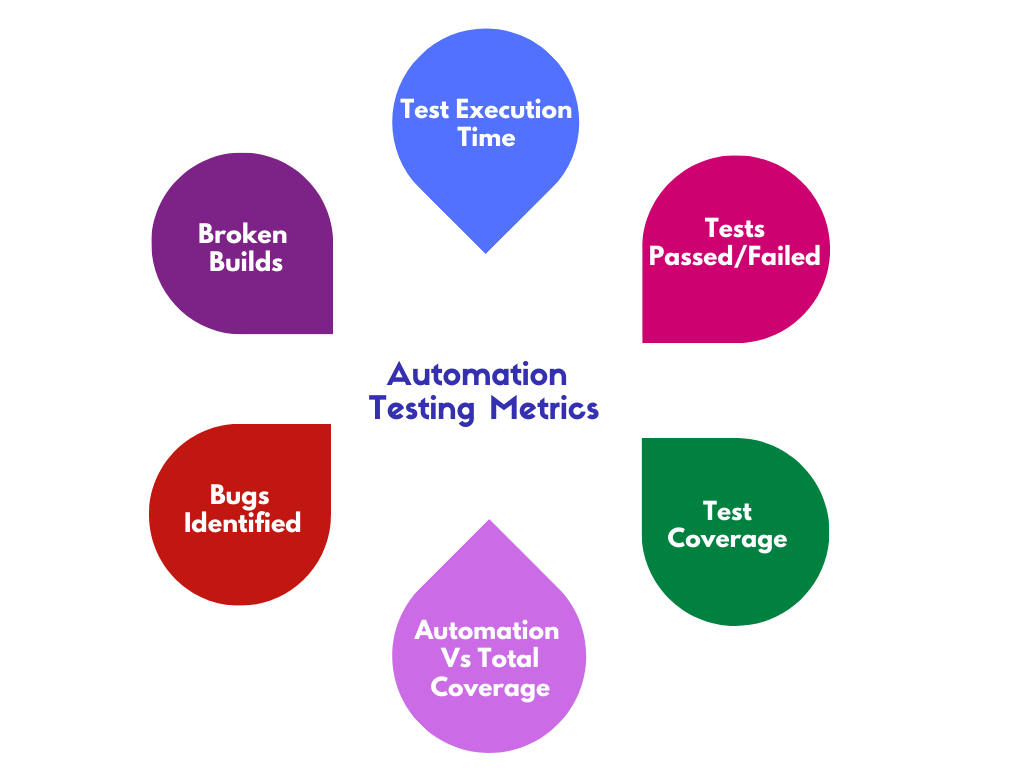The frequent releases become part of the software life cycle in a fast-paced world. To reduce the time to delivery automation becomes mandatory. Test automation is changed from one of the requirements of the project life cycle to an important and integral part of the Agile world.
Why We Need Metrics for Automation Testing?
“If you can’t measure it, you can’t improve it.” ― Peter Drucker
To ensure the correct test strategy is followed to do the test automation. If we are not measuring what we are doing, then it will not improve. It is vital to measure what we do and what we measure too. In this blog, we are going to see the Important Metrics for Automation Testing.
Important Metrics For Automation Testing
Automation testing can be measured with many metrics. Here we are going to see the important metrics for automation testing. They are:
- Total Test Execution Time
- Tests Passed/Failed
- Test Coverage
- Test automation coverage in Total coverage
- Bugs identified
- Broken builds
The below picture shows the metrics in the pictorial representation.
 We are going to see about each of this metric in brief:
We are going to see about each of this metric in brief:
Total Test Execution Time
We are doing automation to reduce the total test execution time. We have to measure how long the automation test execution took to complete. It is a bottleneck in the agile development life cycle. Since the test execution will be done in multiple cycles. But this metric won’t give the status of the particular build.

Tests Passed/Failed
It is a key metric to know how many test cases are passed and failed and it’s the percentage of the test results. By this metric, we will be able to know the progress of the testing and will be able to measure the quality of the build.
Test Coverage
Test coverage helps us to find the effectiveness of the project delivery. This will show the overall test coverage of the project. This will include manual testing as well as automation testing. When we talk about test coverage we should include manual testing as well. Manual testing is important to ensure the application works as expected. With the stable build only we will be able to proceed to the automation of the project.
Test Automation coverage in Total Coverage
As mentioned earlier, test automation is part of the total coverage of the application. We need to measure how much percentage test automation contributes to total coverage of the application. We need to build a right test strategy to identify the tests which are aligned with the core workflows and the business scenarios. This will help to avoid the flaky tests as well as to focus on building the right automation tests.
Bugs identified
This is an important metric as to how many bugs identified with the automation testing implementation. Since when doing automation regression testing will help to identify the bugs which are impacted by the newly introduced feature. This metric will help to prepare the scripts in such a way that the identification of bugs in the future too.
Broken Builds
This metric will be helpful when your deployment pipeline is complete automation and following the CI/CD process. The percentage of broken builds show the best engineering practices and code quality. It measures how many builds broken by the test automation tests.
I hope this blog helps to understand the glimpses of important metrics for automation testing.







